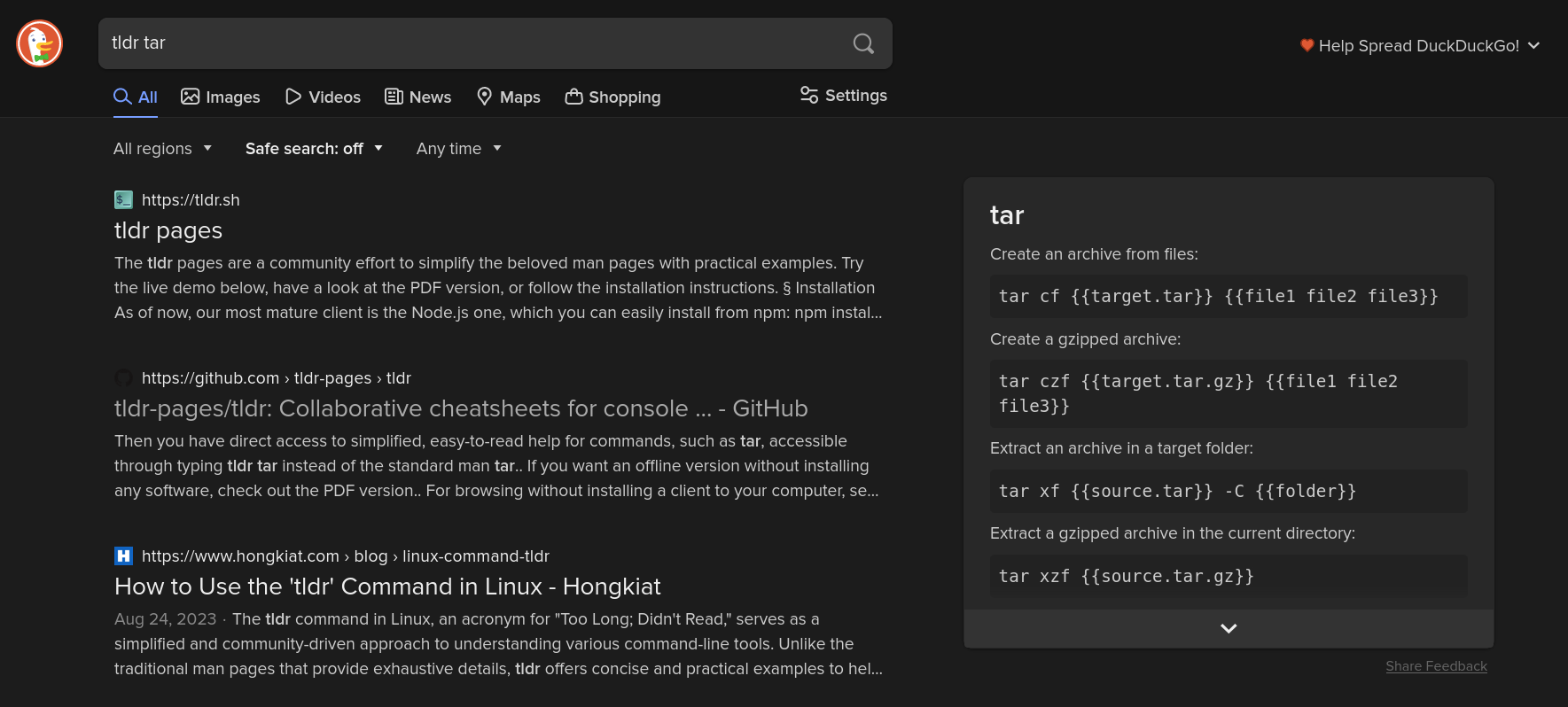Too Long, Didn’t Read the other blog posts
Christmas Day is finally here! I’m sure that, over the past few weeks, you might have missed one or two blog posts of ours. I don’t blame you, the holiday cheer conquers all desire to do anything else, really.
That being said, we’ll leave you with one final awesome tool you can use whenever you want to find out something new when working in the terminal. Not only that, but here is a TL;DR of pretty much all of our posts for Advent of Supercomputing:
Find cool commands and run
tldron them.
Wait, so uhhh, what’s tldr?
Too Long, Didn’t Read the Manual
Man pages on Linux are an awesome way to check the reaches and functionality of
a program. Run man on a lot of low-level commands, and you’ll find detailed
argument descriptions, runtime clarifications, etc.
>>> man git
That being said, Man pages are verbose and comprehensive. But you don’t want
comprehensive, that’s too long! You probably want to figure things out fast and
work out from there. Well, tldr excels here: rather than dumping the entire
30-page user manual, tldr will show you a small set of examples on how to use
a given command, some of which will surprise you enough that you might find a
certain command is better than you gave it credit for.
First, we’ll install tldr:
brew install tldr
This works on Arch Linux, Ubuntu, you name it.
Anyway, as a great example, we’ll refer to
this awesome xkcd comic as a point of reference
for what we want to do. Look, the tar command is hard to remember for almost
anyone, myself included. Rather than refreshing my memory using the man page,
I can just:
>>> tldr --update
# --->8---
>>> tldr tar
tar
Archiving utility.
Often combined with a compression method, such as gzip or bzip2.
More information: <https://www.gnu.org/software/tar>.
- [c]reate an archive and write it to a [f]ile:
tar cf path/to/target.tar path/to/file1 path/to/file2 ...
- [c]reate a g[z]ipped archive and write it to a [f]ile:
tar czf path/to/target.tar.gz path/to/file1 path/to/file2 ...
- [c]reate a g[z]ipped archive from a directory using relative paths:
tar czf path/to/target.tar.gz --directory=path/to/directory .
- E[x]tract a (compressed) archive [f]ile into the current directory [v]erbosely:
tar xvf path/to/source.tar[.gz|.bz2|.xz]
- E[x]tract a (compressed) archive [f]ile into the target directory:
tar xf path/to/source.tar[.gz|.bz2|.xz] --directory=path/to/directory
- [c]reate a compressed archive and write it to a [f]ile, using the file extension to [a]utomatically determine the compression program:
tar caf path/to/target.tar.xz path/to/file1 path/to/file2 ...
- Lis[t] the contents of a tar [f]ile [v]erbosely:
tar tvf path/to/source.tar
- E[x]tract files matching a pattern from an archive [f]ile:
tar xf path/to/source.tar --wildcards "*.html"
This is a ton of examples that cover 99% of my usage of tar. There are a
surprisingly large number of cheat sheets from tldr, including for
any of the commands from our Advent of Supercomputing!
For instance, mtr, gnuplot, xev, ffmpeg, fuck, wormhole, rclone,
rr, tesseract, mosh, figlet and many more of the commands we’ve covered
all have tldr pages!
If you ever feel like you want to explore, or just want to see what the limits
of your own commands are, chances are that tldr will show you something new.
And fast, too!
As a tip tldr can show you cool stuff with tldr --list and you can learn a
ton of stuff, just like these blog posts.
Clients and other Options
(This section was written by Paco btw)
But… Matei, tldr --list doesn’t work on my system. And when I saw someone use tldr the other day I was surprised that their client just output text— it’s not like this on my system.
That is because different systems offer a different default tldr client. On Void Linux the default is written in Go, which offers fuzzy searching and interactions. It’s very nice (except when the command turns my output invisible, so I have to enter reset), and I would recommend it over the plain output of pages of other clients. The Go client also gives benchmarks for the Go, Bash, Rust, C++, and Node clients btw.

Digging into the parent, the tldr-pages repo, I see there are a lot of clients written for tldr-pages, and… wait a minute… DuckDuckGo is on here? Apparently typing “tldr <command>” into the search engine will get your corresponding tldr-pages output on the right. What the duck, I didn’t know that.

There’s more good stuff that I hadn’t expected to find, so read the wiki if you’re interested in perhaps creating your own entries or other: wiki
Now as another mention the command cheat is a similar alternative to tldr, and we talked about cheat and tldr in our terminal guide. And if you want more options the tldr git repo also has a mentions of few more alternatives of its own: devhints, eg, etc. Check out their list.
Merry Christmas
The faster you move, the more you can do. Or, even better, the quicker you can take a minute and enjoy the world as it is, the happier you’ll be.
Have a wonderful Christmas and winter holiday!
snowmachine:
(Can be installed with pip)